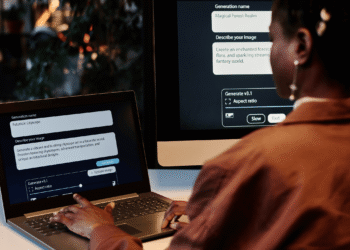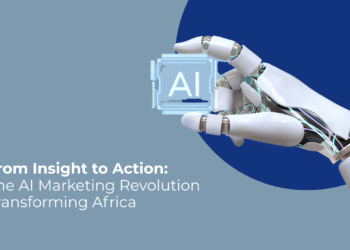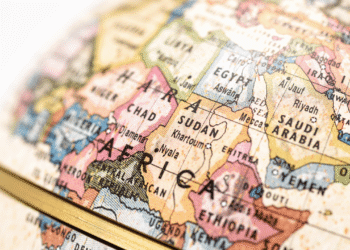Picture this: It’s 2030, just five years from now. Africa’s economy has been transformed by a $1 billion AI revolution. Marketing teams across Lagos, Nairobi, Cape Town, and Cairo are delivering hyper-personalised experiences that would make Silicon Valley giants envious. Local businesses are outperforming global competitors by solving uniquely African problems with AI-powered solutions.
This isn’t a distant fantasy; it’s happening right now.
In a recent Marketing Analytics Africa exclusive webinar, Maurice Igugu, Chief Marketing Officer at Sterling Bank and board executive member of ADVAN, pulled back the curtain on how African brands are already using AI to win. His insights reveal a continent not just catching up, but leapfrogging ahead in unexpected ways.
The Urgency Nobody’s Talking About
Your biggest competitive threat isn’t falling behind the rest of the world,” Maurice revealed during our conversation. “It’s falling behind the local front-runner, who is already using AI to capture your market share.
The numbers tell a compelling story. The AI retail market in Africa is exploding from $174 million in 2024 to over $1.1 billion by 2032, a staggering 26% compound annual growth rate. But here’s what caught my attention: 40% of African institutions are already experimenting with AI solutions, and your competition might be sitting right next door.
Maurice shared a sobering reality check:
About 2,400 AI-focused companies are already operating in Africa, with startups making up 41% of them. If you don’t step up, you’ll find that two or three years down the line, it becomes a huge hurdle to even enter the space.
The Great African Paradox: Why Infrastructure Problems Don’t Matter
Here’s where Africa’s story gets fascinating. We have power challenges, limited cloud computing infrastructure, and data collection issues. Yet somehow, local companies are building AI systems that solve real problems in ways that global solutions can’t.
Maurice calls this “technological leapfrogging,” the same phenomenon that saw Africa skip landlines and pioneer mobile money. “We don’t wait for perfect conditions,” he explained. “We find problems and use AI to solve them.”
Take healthcare, for example. With Nigeria’s doctor-to-patient ratio being critically low, especially with medical professionals migrating abroad, African innovators are using AI-powered drones to deliver telemedicine to remote areas. It’s not about optimising existing systems—it’s about creating entirely new solutions for African realities.
Four Playbooks That Are Already Working
Through our analysis of Africa’s most successful AI adopters, we identified four practical playbooks that any marketer can implement immediately:
Playbook 1: The Hyper-Personalisation Engine
Remember when marketing meant putting customers into broad segments and hoping for the best? Those days are over.
A major African e-commerce company is using AI-powered recommendation engines to drive an estimated 24% of its total revenue. Their secret? A three-step process:
- Ingest Data: Collect customer information from every touchpoint
- AI Analysis: Use machine learning to predict behaviour and create dynamic customer profiles
- Action: Trigger personalised recommendations, dynamic pricing, and tailored campaigns
“Rather than this bulk attitude we’ve always had where we just put customers in huge segments and push emails hoping they’ll respond, we’re now treating each customer as an individual,” Maurice explained.
Playbook 2: The Automated Content Factory
Content creation at scale across Africa’s 2,000+ languages and diverse cultures seems impossible. But smart marketers are cracking the code with what Maurice calls the “80-20 rule.”
Use AI tools like ChatGPT and Jasper to generate 80% of your content, then have local teams provide the crucial 20%: the cultural nuance, local idioms, and authenticity that AI can’t replicate.
Maurice offered a cautionary tale:
“Safaricom launched an AI-generated TV ad to cut costs. It sparked public backlash because people had six fingers instead of five, and faces didn’t look authentically African. The human-in-the-loop wasn’t quite in the process.”
Contrast this with Coca-Cola’s ‘Create Real Magic’ campaign, which empowered users to co-create with the brand using AI, resulting in massive organic engagement and a 5-6% revenue increase.
Playbook 3: The Intelligent Lead & Sales Accelerator
Sterling Bank’s own success story illustrates this playbook perfectly. They created Naya, an AI chatbot available on sterling.ng/naya that can converse in Pidgin English and help customers find information in seconds rather than the 10-15 minutes typically spent scrolling through websites.
“People come to websites primarily looking for information,” Maurice noted. “With a chatbot, you just ask a quick question and get the response. It can even draft emails to customer service for you.”
The impact? Fewer calls to contact centres, faster customer service, and higher satisfaction rates. Maurice mentioned an example from China where an AI sales agent outperformed human counterparts, hinting at the massive potential ahead.
Playbook 4: The Proactive Retention & Loyalty Loop
Here’s a sobering statistic: It’s 5 to 25 times more expensive to acquire a new customer than to retain an existing one in the African ecosystem. Smart marketers are using AI to predict customer churn before it happens.
The system works by analysing customer data to identify subtle signals that someone might leave, then automatically triggering personalised retention messages. As Maurice explained, “You can retain probably 60-70% of customers because they receive personalised messages that make them feel understood.”
The Real Talk: Where AI Marketing Fails
Not every AI story has a happy ending. Maurice was refreshingly honest about failures, particularly around the Safaricom example. But the lessons are invaluable:
- Never skip the human review process: AI-generated content needs local cultural validation
- Economic sensitivity matters: If your AI recommends products beyond your audience’s financial reach, you break trust
- Focus on co-creation, not replacement: The most successful campaigns empower users rather than replacing human creativity
Starting Your AI Journey: The “Crawl, Walk, Run” Framework
Feeling overwhelmed? Maurice’s advice is simple: start small.
Crawl: Pick one significant business problem and solve it with AI. A customer service chatbot is often a great starting point.
Walk: Once you prove ROI, start connecting your playbooks. Use data from your personalisation engine to fuel your churn prediction model.
Run: Rewire entire business domains with integrated AI solutions.
“Don’t try to boil the ocean, focus on one high-impact area, solve a problem, prove ROI, and you’ll get organisational buy-in to scale from there.”
The key insight? “Start playing with these tools in whatever field you’re in; content, media, wherever. When you do, you’ll realise how much value you can bring to the table.”
Three Critical Challenges (And How to Overcome Them)
Maurice identified three major obstacles facing African marketers:
- Infrastructure & Data Deficit: Build mobile-first, low-bandwidth solutions and invest in collecting high-quality first-party data
- Human Capital Gap: Focus on upskilling existing teams rather than replacing them
- The Regulatory Maze: Embed legal and compliance teams into AI projects from day one
The Cultural Revolution That’s Happening
Perhaps the most profound insight from our conversation was about culture.
“AI is supposed to help enhance, not necessarily replace human intelligence,”.
“The real key to sustainable success is building a culture where your team sees AI as a powerful tool to amplify their intelligence and creativity.”
This mindset shift is crucial. During the Industrial Revolution, those who embraced machines scaled their businesses exponentially. Today’s revolution is about cognition—augmenting brain capacity rather than physical energy.
Looking Ahead: The $1.5 Trillion Question
As our conversation concluded, Maurice painted a picture of Africa’s AI future:
“It will be generative, it will be local, and it will be ethical. Success won’t come from importing generic models. The winners will be those who build, train, and fine-tune AI on African data, for African contexts, in a way that respects our unique values and diversity.”
The opportunity is staggering, potentially over $1 billion infused into African economies by 2030. But as we are reminded, “The playbook is here. The opportunity is now.”
For marketing leaders across Africa, the message is clear: your competition isn’t waiting for perfect conditions. They’re not waiting for better infrastructure or more data. They’re solving problems today with the tools available now.
The question isn’t whether AI will transform African marketing, it’s whether you’ll be leading that transformation or watching it happen from the sidelines.
Read more AI in Marketing Articles
This article is based on an exclusive Marketing Analytics Africa webinar featuring Maurice Igugu, Chief Marketing Officer at Sterling Bank. To join our upcoming webinars and access more insights about AI marketing in Africa, subscribe to our newsletter and visit marketinganalytics.africa.
Ready to start your AI marketing journey? The tools and strategies discussed in this article are available today. The only question is: will you crawl, walk, or run toward the $1 billion opportunity waiting ahead?







